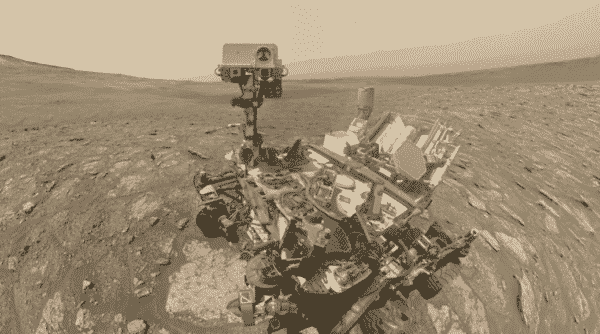By Amanda Kooser, C|NET
When the words “intriguing,” “Mars” and “ancient life” show up in the same NASA statement, my ears perk up. On Sunday, NASA talked up a new study looking at “unusual carbon signals” measured by the Curiosity rover in the red planet’s Gale Crater.
Curiosity hasn’t found proof of ancient microbial life on Mars, but scientists aren’t ruling it out as one possible explanation for the rover’s findings. Powdered rock samples studied by the rover show the kind of carbon signatures that are connected to biological life on Earth. But Mars may be telling a very different story.
The study is set to be published this week in the Proceedings of the National Academy of Sciences journal.
Carbon is a key element in life on our own planet, so it’s important to study how it appears on Mars. “For instance, living creatures on Earth use the smaller, lighter carbon 12 atom to metabolize food or for photosynthesis versus the heavier carbon 13 atom,” NASA said. “Thus, significantly more carbon 12 than carbon 13 in ancient rocks, along with other evidence, suggests to scientists they’re looking at signatures of life-related chemistry.”
Curiosity heated up rock samples in an onboard lab and used its Tunable Laser
Spectrometer instrument to measure the gases released by the samples. Some of the rock samples had “surprisingly large amounts of carbon 12” compared with what has been found in the atmosphere of Mars and in Martian meteorites.
According to a statement from Penn State, the researchers proposed several explanations: “a cosmic dust cloud, ultraviolet radiation breaking down carbon dioxide, or ultraviolet degradation of biologically created methane.”
The cloud idea connects back to an occurrence when the solar system passed through a galactic dust cloud hundreds of millions of years ago, which could have left carbon-rich deposits on Mars. The second idea suggests ultraviolet light could have interacted with carbon dioxide gas in the Martian atmosphere and left molecules with the distinctive carbon signature on the surface.
A biological origin idea could have involved bacteria releasing methane into the atmosphere that was then converted into molecules that settled back down on Mars, leaving behind the carbon signature Curiosity found.
Click here to read the full article on C|NET.



